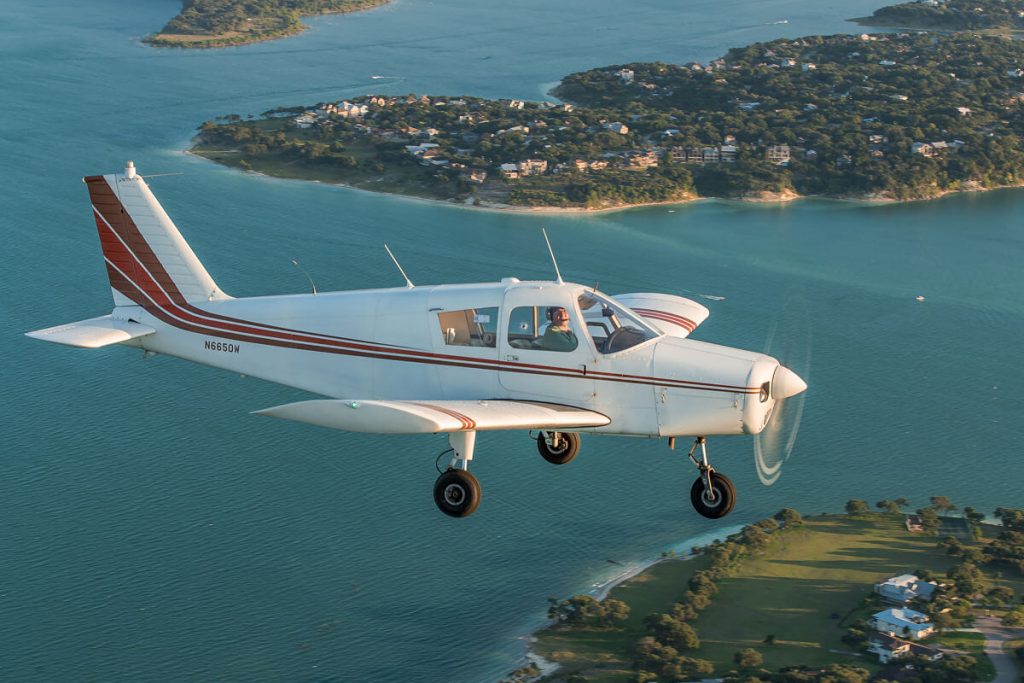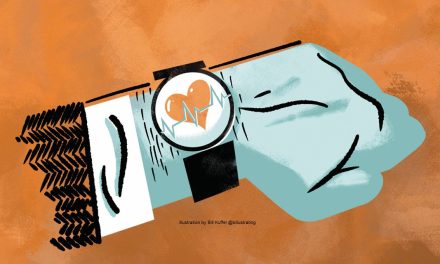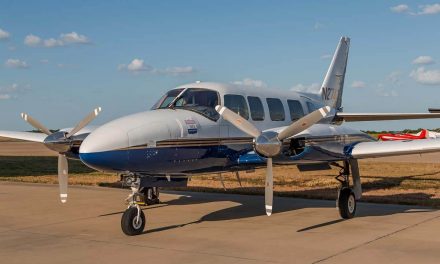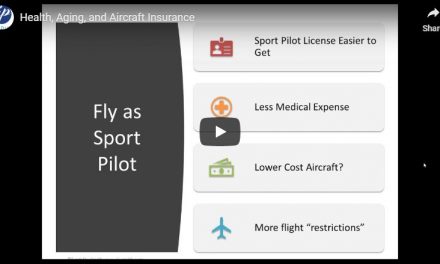
Growing up in the center of Iowa’s boating world meant when we went flying, we flew over a lot of water. There was Little Wall Lake, Big Creek, and Saylorville Lake. It’s not the same as flying over the ocean or the Great Lakes, but we did have water to fly over.
One year, a Cessna 152 rented from my in-law’s FBO crashed into the middle of the Des Moines River. The river was higher than normal, and the plane was flying lower than normal to see the flooding. The renter pilot made the mistake of flying too close to the ground and hitting a power line across the river. The phone calls came, and we jumped in a car and headed out to see if we could salvage the plane.
All we could see was the top foot or so of the Cessna 152’s rudder and vertical fin. Two rural power trucks parked along the riverbank were contemplating their next move in repairing the downed cable. There were a few boats cruising the river gawking at what was visible of this unusual landing (crash). The pilot and passenger made it to a rock, got a ride to shore, and were off to the hospital for treatment of their minor injuries. Luckily, there were no serious injuries due to the pilot’s miscalculations. However, the Cessna suffered a worse fate.
My father-in-law commandeered a nearby boat and we all motored out to survey the situation; he thought we might be able to save the airplane. The Cessna landed with its nose pointed upriver and the nose about 2 feet below the surface of the water. We were able to reach over the edge of the boat and tie a rope around the base of the propeller. We even tied an empty milk container to the rope so we could find it when we came back. Coming back probably was not the smartest plan, but it sounded good at the time.
Looking at the shore, we saw the power company trucks with their four-wheel drive and big winches on the front for dragging cables and power lines around. The two of them were just waiting for something to do. We had already commandeered a boat; all we needed was to commandeer the trucks. The idea was that we could hook the cable from the winch to the rope on the Cessna’s propeller and the power truck could pull the plane across the river to the safety of the shore. All we needed to do was take the end of the winch cable in the boat and stretch it across the fast-flowing, flooded Des Moines River.
In theory this was a great idea; however, trying to hold on to a huge cable and stretching it across what felt like hundreds or even thousands of feet of a rushing river is not an easy chore. It took three of us to hold the cable and stay in the boat as we got further from the truck. The drag on the cable was tremendous and I still do not know how we managed to do it.
Now that I look back, we should have commandeered a bigger boat. The one we were using was really having trouble getting the cable to the aircraft. The owner of the boat was having second thoughts about the situation. He had to use full throttle to keep the boat moving and under control. This would have been a great “extreme” video in the making with a disclaimer: “Don’t try this at home!”
It took us several tries to get the cable to the plane and a few more tries to actually connect the cable to the rope. Nevertheless, we did the job.
We connected the cable and the power company truck started to pull the plane in on its winch. All we could see was the top of the rudder and vertical fin moving across the water. The sight was unbelievable and we were ready to celebrate.
As the tail moved through the water, looking like a fin in a shark movie, we ran into a small problem. Apparently, there was something in the Cessna’s way. All of a sudden, the tail shot up in the air and the plane went over on its back, completely disappearing below the surface. The rope that we had used to attach the cable to the plane snapped and the cables zinged across the water. The milk jug was gone, the plane was gone, and the cable was back on shore. At least the plane was closer to the shore, which was a good thing when the insurance company finally went to retrieve the salvage after the floodwater receded. We had actually managed to tow the plane to where the riverbank was when the river wasn’t at flood stage. There was not much left of that Cessna 152 that wasn’t damaged. The insurance company still paid for the loss (which they would have done anyway, even if we hadn’t spent all that time trying to retrieve the sunken ship).
Overwater requirements
With that cautionary tale in mind, what if you take off on a flight and head out over a big body of water (like the ocean)? Is there anything special you should worry about (besides power lines)? As a pilot, you need to have the right equipment, the right charts, and the ability to fly the route. If you have a private certificate and the correct equipment (based on how far from shore you fly), you have met the official FAA requirement for the flight.
But the insurance policy might not cover your destination. Check your insurance policy before you take off. Many insurance underwriters have territory restrictions. These restrictions would be about the only factor controlling your flight over the ocean.
Insurance beyond the borders
One underwriter does not cover any territory but the 48 contiguous states. Therefore, you could fly along the coast, but if you were taking a flight from Tampa to the Bahamas, you would not have any coverage while in the Bahamas.
In general, most aviation insurance policies will cover the United States, Canada, and sometimes Mexico. There might also be language that says something like, “and en route to those places.”
A few companies include territories like the islands of the Bahamas, or the Caribbean, or maybe the islands of the West Indies. Most companies exclude Cuba and a few other South American countries, depending on the political climate.
Still others put latitude and longitude limits into the language. Whatever the case, you need to make sure that your policy covers your aircraft at the destination and on the flight there.
Basically, if the policy doesn’t include your destination, you need to contact your agent and ask for a territory extension. But remember that not all companies will extend the territory! There are a number of factors the underwriter will take into account before making a decision to add coverage. They will consider the aircraft, your ratings, your experience, and whether you have ever been on a flight like this before.
One year we had a customer sending his Columbia 350 to Australia. He wasn’t qualified to fly it there and had to hire a company that did the extended tanking systems and provided an experienced pilot for the trip. The underwriters agreed to a premium increase for the trip and even offered a discount on the successful landing at the destination. Kind of hedging their bets, I guess. Slightly different trip than the average owner will take but was still doable.
First flights aren’t exclusionary
Just because this is your first fight across water doesn’t mean the insurance company will not cover it; they just want more details. My first trip was with a friend in a pressurized Skymaster. We flew from Fort Lauderdale, Florida, to Treasure Cay in the Bahamas. The policy included the Bahamas and “en route” so we didn’t need to do anything but meet the FAA and customs requirements. It was a short and uneventful trip. We could see land the whole time we were in the air.
But if you are uncomfortable, oftentimes a trip with a group is the best way to make your first overwater flight. The premise is that you will have other aircraft with you if something happens. More than likely there will be someone in the group with overwater experience and maybe they will help you plan the trip.
What’s covered over water?
Depending on the type of coverage you have purchased, when you end up ditching the aircraft, those coverages will go into effect. There is the potential that the insurance company will not try to salvage the aircraft. The claims department will look at the cost and benefit. If the plane sinks, more than likely it will not be worth the time and money to retrieve the salvage. It’s just a numbers game.
What about the extras — life rafts, Mustang suit, personal flotation devices, etc. — you might be carrying on the plane? The policy language often does not specifically mention these items as being covered or as being excluded. Since most of the items are not attached to the plane they would not be covered as part of the plane so they would have to fall under the personal effects or safety equipment section.
Most polices also have a limit to safety equipment or personal effects. The limit for safety equipment could possibly be used for the raft, PFDs, etc. That limit is usually only about $500 (sometimes $1,000) of value. Personal effects are usually defined in a policy and include items like suitcases, briefcase, etc. But that definition typically doesn’t cover electronics or safety equipment.
Each policy is different. Check the definitions pages and the policy exclusions and if in doubt, call your broker and ask them for the details.
So, flying over rivers, lakes, and ponds is not a problem. Flying over the ocean is not usually a problem. Just make sure that before you leave, you meet the FAA and customs requirements and you have read the territory covered in your policy.





